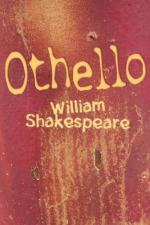|
This section contains 6,247 words (approx. 21 pages at 300 words per page) |

|
SOURCE: Aubrey, James R. “Race and the Spectacle of the Monstrous in Othello.” CLIO 22, no. 3 (spring 1993): 221-38.
In the following essay, Aubrey examines the characterization of Othello within the context of contemporary English Renaissance associations of blacks with monsters, and demonstrates the ways in which such associations would have heightened the response of early audiences to Othello's character.
Whoever believed in the Ethiopians before actually seeing them?
Pliny
Near the end of The Tempest, Antonio jests that the monster Caliban “is a plain fish, and no doubt marketable.” As an earlier remark in the play makes clear, however, Caliban would be valuable not only in a fishmarket but also as an exotic creature for display at court, “a present for any emperor that ever trod on neat's leather.”1 When Shakespeare was writing Othello, his attraction to Cinthio's narrative about a black Moor in Venice may likewise have been...
|
This section contains 6,247 words (approx. 21 pages at 300 words per page) |

|


